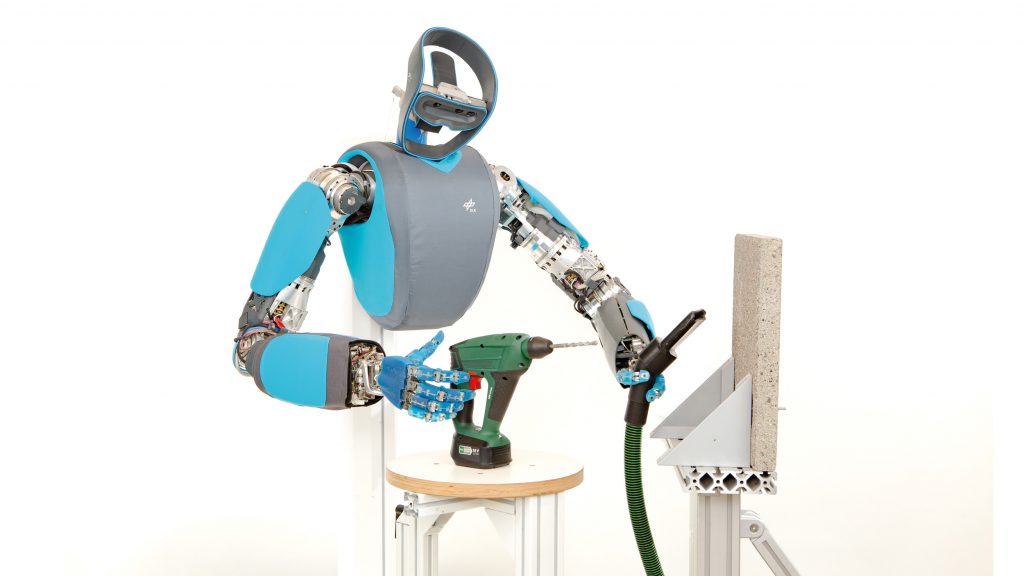Humanoid robot
The robot David is continuously being expanded into a complete humanoid robot. He currently has two arms, a neck and a head. David is to be employed in an environment suitable for humans. For this the robot should resemble a human as much as possible in terms of size, strength and flexibility. David’s mechatronic concept is based on powerful and effcient brushless motors combined with highly integrated power and digital electronics. The high-performance hands are slim and light, as their drives are built into the forearms.
David should be able to operate safely in an unstructured and dynamically changing environment. Collisions with objects and obstacles can occur in unknown terrain during normal use. Fast impacts during these collisions often cause damage to the structure or drivetrain of conventional rigid humanoid robots in many situations. This can sometimes lead to the complete cancellation of the mission.
To minimise this risk, in David all 41 degrees of freedom are integrated through variable stiffness actuators (VSAs) with real mechanical springs. These variable stiffness actuators have a high mechanical elasticity. The inherent stiffness in the joints can, like in humans, be infnitely varied by co-contraction of the muscles. The high elasticity in the robot’s joints can buffer the collision energy. The spring acts as a mechanical low-pass flter between the gearbox and the output, which reduces torque peaks / force peaks at the output. This leads to increased mechanical robustness.
Another motivation for the development of David is to be able to perform human-like highly dynamic movements. The springs in the VSAs act as energy stores that allow very fast movements to be performed – even faster than the maximum speed of the engines. In addition, the energy effciency for certain cyclical movements can be increased. With skilful stimulation of the natural vibration behaviour of the system, most of the movement takes place in the springs. The motors and gearboxes, which tend to have high energy losses, must move at a lower speed and deviation than the robot joints. This results in a more effcient overall movement.
German Aerospace Center (DLR)
Sebastian Wolf · E-Mail: sebastian.wolf@dlr.de · DLR.de/en
